I understand that you can use a gyrator to simulate capacitors or inductors with (very) high values. A capacitor stores its energy in an electric field, an inductor in a magnetic field. Where is the (high?) energy of a simulated 10H inductor? The gyrator doesn't even have to have an inductor. This gyrator simulates an inductor of 1H for every 2\$\mu\$F.
